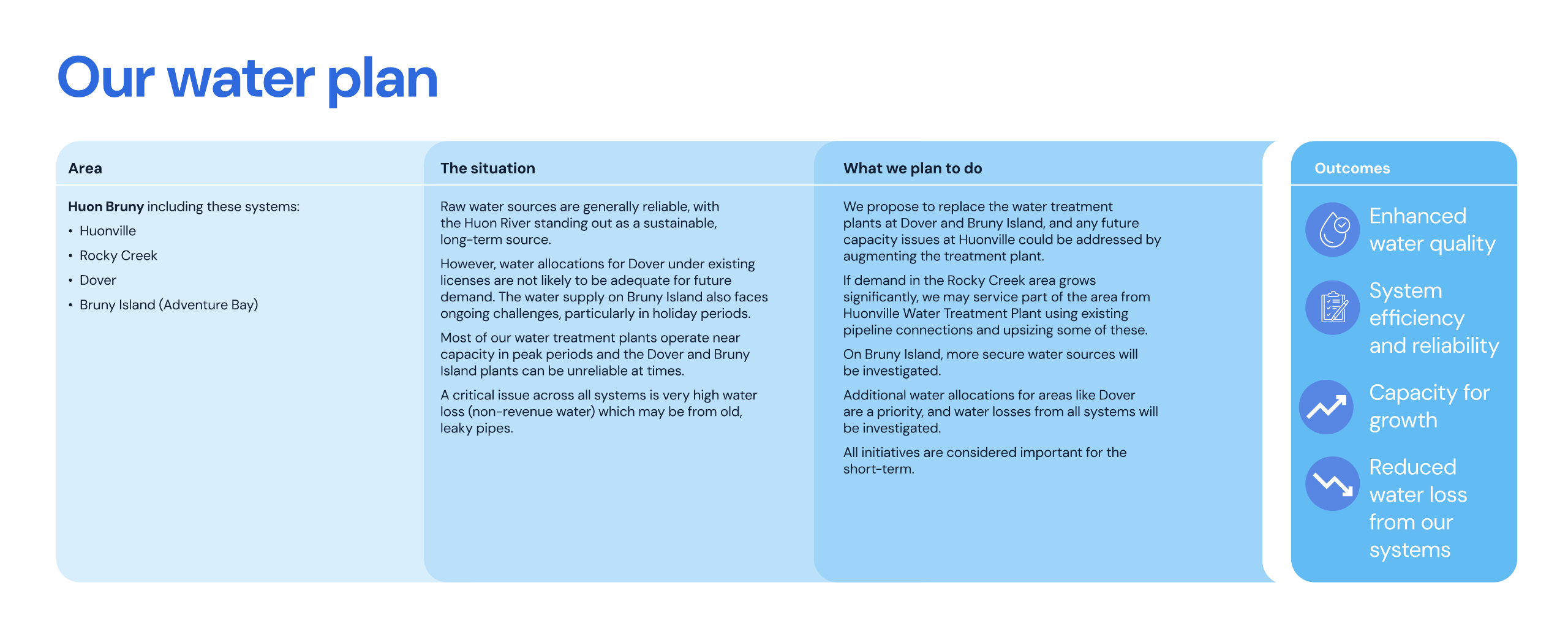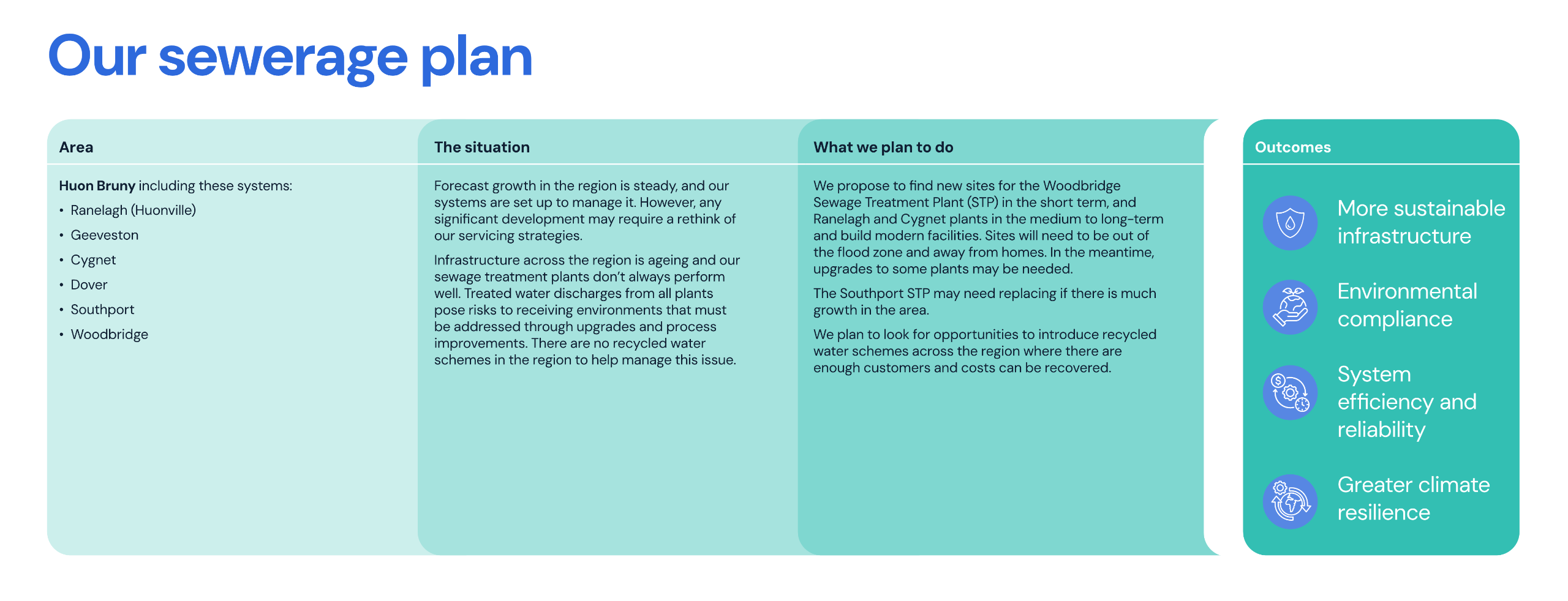Current services
The region’s main centres are Huonville and Cygnet, and there are many smaller towns throughout the Huon Valley and on Bruny Island.
The region has four water and six sewerage systems as well as a recycled water scheme to support the region’s residents, businesses and farms. In addition to the TasWater systems, Tasmania Parks and Wildlife Service, and the Department of State Growth own and operate small sewerage schemes.









